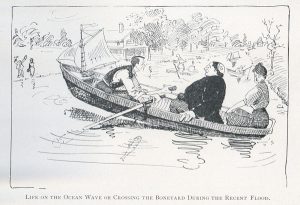Written by Caitlin Stamm
The Division of Rehabilitation-Education Services (DRES) records have been made available due to the generous support of B. Joseph White and the President’s office. DRES records were processed and selectively digitized for online exhibition in 2008-2009.
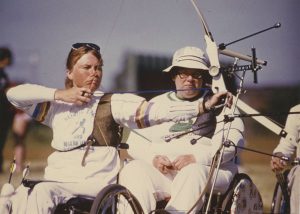
The Gizz Kids program was created in 1948 by Timothy Nugent and was run by the service fraternity Delta Sigma Omicron as a program of sports available to student-athletes with disabilities. The intention of the program mirrors that of DRES: to offer students with disabilities the ability to fully experience college and all of its many opportunities, athletics included. The Gizz Kids program grew to include a number of sports, including football, basketball, baseball, track and field, fencing, archery, cheerleading, and square dancing for students in wheelchairs. The program also included bowling for the blind and adaptive swimming.
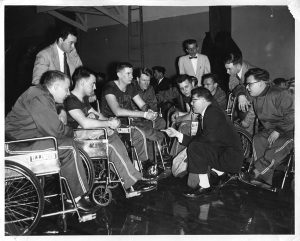
The Gizz Kids program was an important one for both students in the Rehabilitation-Education program and the general public. The fierce competition that one expects in college athletics was retained in each of the adapted Gizz Kids sports; the program became an important tool in educating the public. The program showed the general public the strength, skill, and abilities of athletes with disabilities and motivated other students and younger people with disabilities. To mirror traditional basketball, the wheelchair basketball organization followed NCAA regulations exactly, excepting three modifications [1]. Continue reading “The Gizz Kids: Athletics for Students with Disabilities”
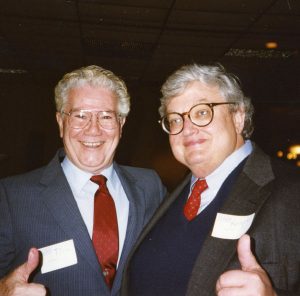
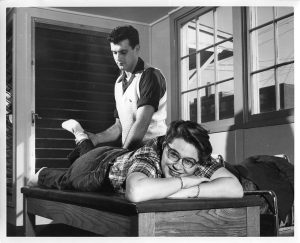
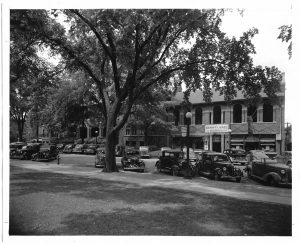
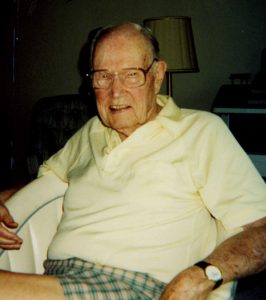
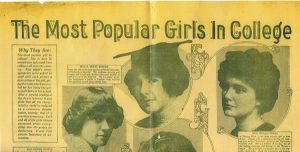
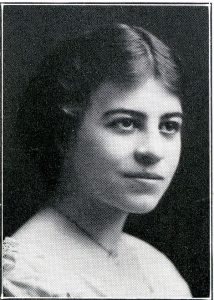
![Postcard from RS 41/20/73.<br /> The note on the reverse reads: "Where all freshman [<em>sic</em>] are in danger of being dumped."](/slc/wp-content/uploads/sites/73/2015/07/socials081-300x188.jpg)
